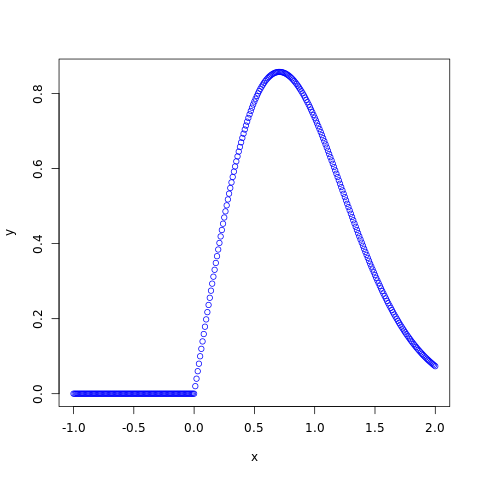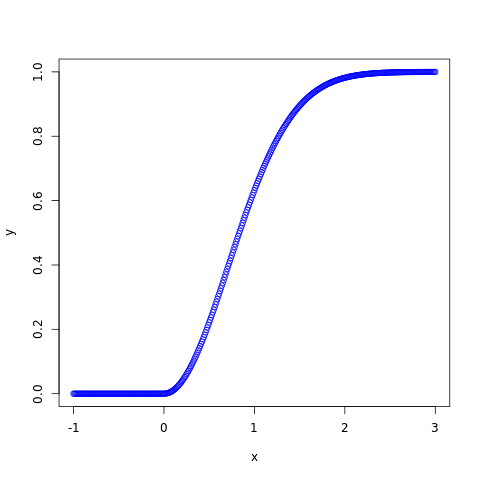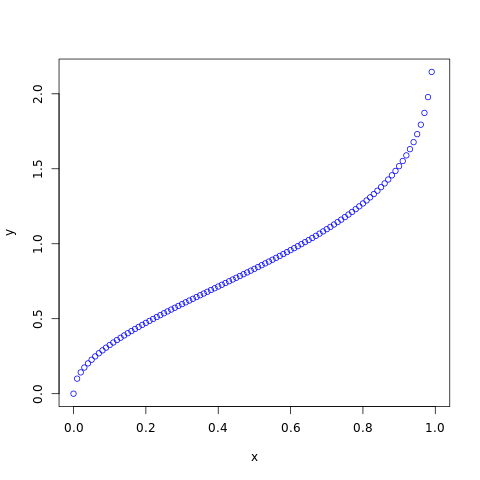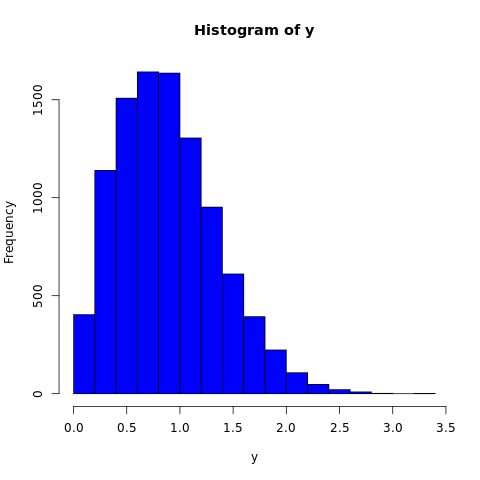R - Weibull Distribution
Weibull Distribution is a continuous probability distribution and it is widely used analyze life data, model failure times and access product reliability. It can also fit a huge range of data from many other fields like economics, hydrology, biology, engineering sciences.
The probability density function (pdf) of weibull distribution is defined as:

Where, k > 0 is the shape parameter and λ > 0 is the scale parameter of the distribution.
The cumulative distribution function (cdf) evaluated at x, is the probability that the random variable (X) will take a value less than or equal to x. The cdf of weibull distribution is defined as:

In R, there are four functions which can be used to generate weibull distribution.
Syntax
dweibull(x, shape, scale) pweibull(q, shape, scale) qweibull(p, shape, scale) rweibull(n, shape, scale)
Parameters
x |
Required. Specify a vector of numbers. |
q |
Required. Specify a vector of numbers. |
p |
Required. Specify a vector of probabilities. |
n |
Required. Specify number of observation (sample size). |
shape |
Optional. Specify shape parameter of the distribution. Must be a positive number. |
scale |
Optional. Specify scale parameter of the distribution. Must be a positive number. Default is 1. |
dweibull()
The dweibull() function measures probability density function (pdf) of the distribution.
#creating a sequence of values between #-1 to 2 with a difference of 0.01 x <- seq(-1, 2, by=0.01) y <- dweibull(x, 2, 1) #naming the file png(file = "weibull.png") #plotting the graph plot(x, y, col="blue") #saving the file dev.off()
The output of the above code will be:

pweibull()
The pweibull() function returns cumulative distribution function (cdf) of the distribution.
#creating a sequence of values between #-1 to 3 with a difference of 0.01 x <- seq(-1, 3, by=0.01) y <- pweibull(x, 2, 1) #naming the file png(file = "weibull.png") #plotting the graph plot(x, y, col="blue") #saving the file dev.off()
The output of the above code will be:

qweibull()
The qweibull() function takes the probability value and returns cumulative value corresponding to probability value of the distribution.
#creating a sequence of probability from #0 to 1 with a difference of 0.01 x <- seq(0, 1, by=0.01) y <- qweibull(x, 2, 1) #naming the file png(file = "weibull.png") #plotting the graph plot(x, y, col="blue") #saving the file dev.off()
The output of the above code will be:

rweibull()
The rweibull() function generates a vector containing specified number of random numbers from the specified weibull distribution. In the example below, a histogram is plotted to visualize the result.
#fixing the seed to maintain the #reproducibility of the result set.seed(10) x <- 10000 #creating a vector containing 10000 random #values from the given weibull distribution y <- rweibull(x, 2, 1) #naming the file png(file = "weibull.png") #plotting the graph hist(y, col="blue") #saving the file dev.off()
The output of the above code will be:



